Inverse Trig Functions
The Inverse Functions
From the general definitions, a trig function of any two angles that are coterminal will have the same values. In addition, since the absolute value of a trig function of an angle is equal to the trig function of its reference angle, there would be an infinite number of angles for which a certain trig function has a specified value. For this reason, the inverses of the trig functions are defined with restricted ranges:
![]()
![]()
Example 1:
![]()
Solution:
![]()
![]()
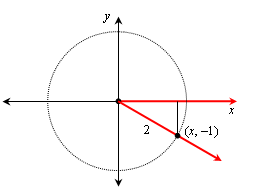
The triangle formed by the perpendicular from the point on the terminal side to the x-axis has hypotenuse 2 and leg 1, so it is a 30-60-90 triangle, and the other leg has length the square root of 3. The 30o angle is the reference angle, so θ = –30o:
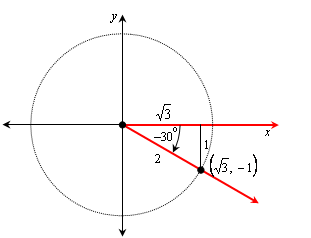
![]()
![]()
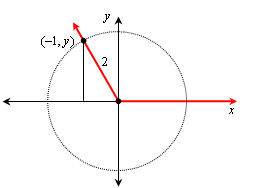
The triangle formed by the perpendicular from the point on the terminal side to the x-axis has hypotenuse 2 and leg 1, so it too a 30-60-90 triangle, and the other leg has length the square root of 3. The 60o angle is the reference angle, so θ = 120o:
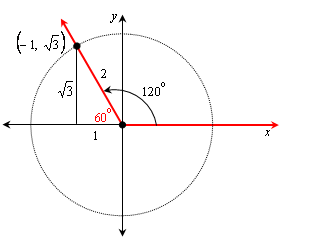
Example 2:
![]()
Solution:
![]()
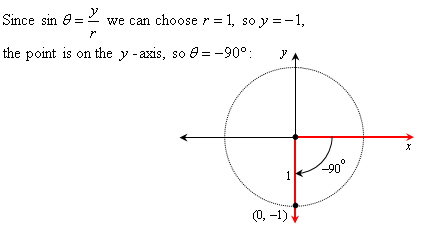
![]()
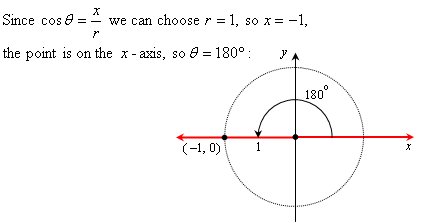
Example 3:
Find θ to the nearest degree if 180o < θ < 270o and sin θ = –0.96126.
Solution:
If α is the reference angle, then sin α = 0.96126. Using a calculator, we find:
α = sin–1 0.96126 = 74o to the nearest degree, so θ = 180o + 74o = 254o:
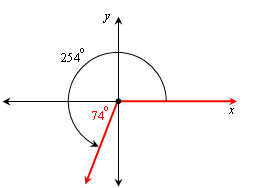
Example 4:
![]()
Solution:
Since cos–1x must be between 0o and 180o, we our answer will be an angle in quadrant 2 with the same reference angle as 237o, so we draw pictures to find the answer:
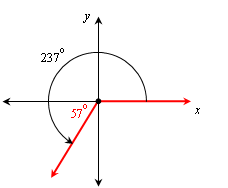
The reference angle is 237o – 180o = 57o, so we draw an angle in the second quadrant with that reference angle, and then find that θ = cos–1(cos 237o) = 180o – 57o = 123o:
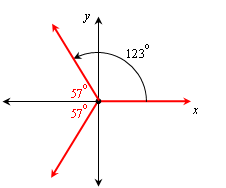
Return to Lesson 15